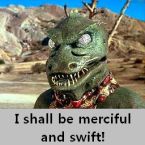geofflambert
Posts: 14863
Joined: 12/23/2010
From: St. Louis
Status: offline

|
Planes in search only mode will attack ships on their own, but the results will not be spectacular and the rest of the squadron will not launch upon detection. If I have a large enough group of carriers I may only use 10% search and possibly only using either dive bombers or torpedo planes. If you have BBs and CA/CLs along for the ride their float planes should be set to Naval Search at 50% or more. If you have 6 or more FPs searching and the weather isn't too bad to operate FPs you should find the enemy with no problems. If you have a cruiser group moving two or three hexes ahead of your carriers with their FPs searching, so much the better. If you have no reason to expect a carrier battle, I usually have the squadrons not searching doing 10% ASW, to suppress any enemy subs in the area. The standard settings for altitude will work for both, i.e. 5,000 feet for torpedo bombers and 10,000 feet for dive bombers. DBs can find and deliver hits to subs from 10k feet. As I always play Japanese and my TBs have more range than my dive bombers, I generally have the TBs searching and the DBs doing the ASW. As American, you might reverse that. If you are in hopes of or are expecting a carrier battle to occur, have no planes doing ASW as the chances of encountering enemy subs will likely be too low to justify it. Your search planes will attack any subs they encounter anyway, and do it up to twice as far away.
An alternative in some cases might look like this: if you have 5 carriers with 10 squadrons of bombers, you could set one squadron to, say, 100% search with the rest at 0% search or ASW, especially in concert with float planes from cruisers. Because weather can spoil your plans as far as FPs go, if you arrange to have FP searches emanating from different hexes (likely with different weather), your chances of success are greater. One way to achieve that is to have a BB or CA group leading with your CV TFs following by, say, two hexes. Your lead group will then draw attacks away from your CV TFs and you will have an opportunity to spot his CVs before he spots yours. Having a too complicated leader TF with following TFs can lead to poor performance, though, and sometimes crazy outcomes.
I like to break up my CVs into as many TFs as possible and especially group CVs and their escorts by their maximum speeds. This is more of an issue for the Japanese than the Americans. I tend to group my CV TFs together in the same hex, or try to. One reason to have separate CV TFs is that sometimes, even if your TFs are all together in one hex, the enemy search planes will find one of the TFs and stop there, with the attacks being directed at the one TF, leaving your others untouched. A hex that is 40 nautical miles across is a big place. So make as many of them as you can, as long as each has an adequate escort. An adequate escort would consist of six or more DDs, one or two CLs, and a couple CAs or BBs. Make sure each TF has a good leader and, if you are aggressive, set the reaction range to six.
|
 Printable Version
Printable Version








 New Messages
New Messages No New Messages
No New Messages Hot Topic w/ New Messages
Hot Topic w/ New Messages Hot Topic w/o New Messages
Hot Topic w/o New Messages Locked w/ New Messages
Locked w/ New Messages Locked w/o New Messages
Locked w/o New Messages Post New Thread
Post New Thread